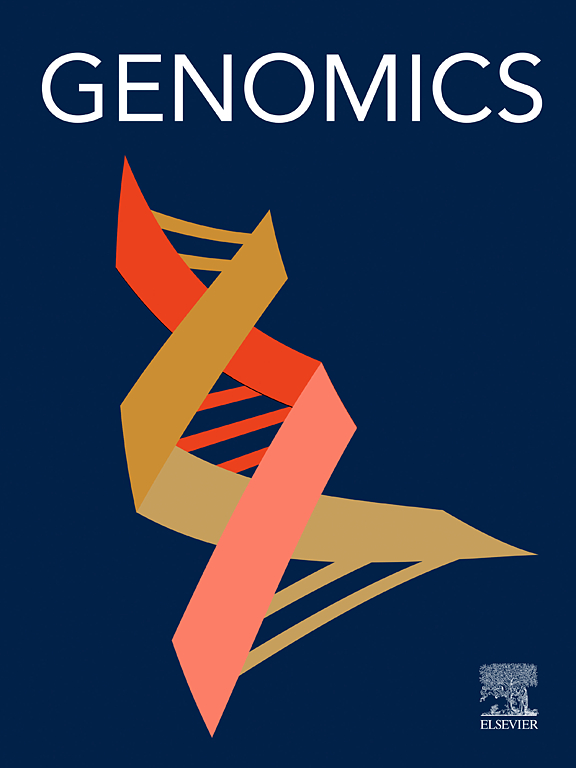Analysis of the potential mechanism of stem cells in the treatment of diabetic nephropathy based on 16S, metabolome and transcriptome
IF 3
2区 生物学
Q2 BIOTECHNOLOGY & APPLIED MICROBIOLOGY
引用次数: 0
Abstract
Background
Diabetic nephropathy (DN) has become a major cause of end-stage renal failure. The therapeutic mechanism of mesenchymal stem cells (MSCs) in DN is not fully understood.
In this study, we used transcriptome sequencing, 16S rRNA sequencing, and metabolomics sequencing to perform a combined multi-omics analysis to investigate the potential mechanisms of MSCs for DN.
Methods
First, DN mouse model was established. Kidneys, feces, and blood were collected from 6 control, 6 model, and 6 intervention (MSCs) groups for transcriptome sequencing, 16S RNA sequencing, and metabolome sequencing, respectively. Then, candidate genes between the 3 groups were identified and enriched using transcriptomic analysis. Next, with the help of metabolomics analysis, differential metabolites were screened by OPLS-DA analysis for control and model groups, as well as model and MSCs groups, respectively. Similarly, differential microorganisms and candidate microorganisms were selected by 16S rRNA gene sequencing data. Subsequently, the correlations between candidate genes and candidate metabolites, candidate genes and candidate microorganisms, as well as candidate metabolites and candidate microorganisms were explored by Spearman correlation analysis, respectively. Finally, a microbe-metabolite-gene network was constructed to identify key genes, key metabolites and key microbes, and their expression levels were analyzed.
Results
There were differences in genes, microorganisms, and metabolites among the samples in the control, model, and MSCs groups. Candidate genes enriched in the Kyoto Encyclopedia of Genes and Genomes (KEGG) pathways included adhesion molecules and 2-oxocarboxylic acid metabolism. GDP-mannose biosynthesis and purine ribonucleoside degradation were significantly enriched by different microorganisms. The KEGG pathways mainly enriched for differential metabolites were PPAR signaling pathway, arachidonic acid metabolism, and Rap1 signaling pathway. A microorganisms-metabolite-gene network containing 25 nodes and 53 edges was constructed with interactions including Sorangium-neg-M501T271 and Tmem238l-pos-M373T270, among others. In addition, 10 key genes, 5 key microorganisms and 10 key metabolites were significantly expressed in both the MSCs group and the control group.
Conclusion
This study identified 10 key genes, 10 key metabolites and 5 key microorganisms and a correlation network diagram was constructed. It provided a theoretical reference for exploring the molecular mechanisms of MSCs for DN treatment.
基于16S、代谢组和转录组分析干细胞治疗糖尿病肾病的潜在机制。
背景:糖尿病肾病(DN)已成为终末期肾功能衰竭的主要原因。间充质干细胞(MSCs)治疗DN的机制尚不完全清楚。在这项研究中,我们使用转录组测序、16S rRNA测序和代谢组学测序进行联合多组学分析,以探讨MSCs对DN的潜在机制。方法:首先,建立DN小鼠模型。收集6个对照组、6个模型组和6个干预组(MSCs)的肾脏、粪便和血液,分别进行转录组测序、16S RNA测序和代谢组测序。然后,利用转录组学分析对3组间的候选基因进行鉴定和富集。接下来,在代谢组学分析的帮助下,通过OPLS-DA分析分别筛选对照组和模型组、模型组和MSCs组的差异代谢物。同样,通过16S rRNA基因测序数据选择差异微生物和候选微生物。随后,通过Spearman相关分析分别探讨候选基因与候选代谢物、候选基因与候选微生物、候选代谢物与候选微生物之间的相关性。最后,构建微生物-代谢物-基因网络,鉴定关键基因、关键代谢物和关键微生物,并分析其表达水平。结果:对照组、模型组和MSCs组样品在基因、微生物和代谢物方面存在差异。在京都基因与基因组百科全书(KEGG)途径中富集的候选基因包括粘附分子和2-氧羧酸代谢。gdp -甘露糖生物合成和嘌呤核糖核苷降解被不同的微生物显著富集。主要富集差异代谢物的KEGG通路为PPAR信号通路、花生四烯酸代谢通路和Rap1信号通路。构建了一个包含25个节点和53个边的微生物代谢产物基因网络,其中相互作用包括Sorangium-neg-M501T271和Tmem238l-pos-M373T270等。此外,10个关键基因、5个关键微生物和10个关键代谢物在MSCs组和对照组中均有显著表达。结论:本研究鉴定出10个关键基因、10个关键代谢物和5个关键微生物,并构建了相关网络图。为探讨MSCs治疗DN的分子机制提供了理论参考。
本文章由计算机程序翻译,如有差异,请以英文原文为准。
求助全文
约1分钟内获得全文
求助全文
来源期刊

Genomics
生物-生物工程与应用微生物
CiteScore
9.60
自引率
2.30%
发文量
260
审稿时长
60 days
期刊介绍:
Genomics is a forum for describing the development of genome-scale technologies and their application to all areas of biological investigation.
As a journal that has evolved with the field that carries its name, Genomics focuses on the development and application of cutting-edge methods, addressing fundamental questions with potential interest to a wide audience. Our aim is to publish the highest quality research and to provide authors with rapid, fair and accurate review and publication of manuscripts falling within our scope.
 求助内容:
求助内容: 应助结果提醒方式:
应助结果提醒方式:


